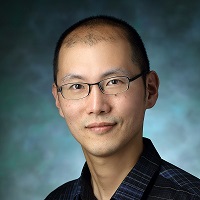
Jungsan (Jay) Sohn
725 N. Wolfe Street.
WBSB 615
Baltimore MD 21205
Research Interests: We are interested in understanding mechanisms that allow biological stress-sensors to detect danger signals and initiate highly coordinated coping-responses by assembling into higher order molecular assemblies.
Innate immunity is the first line of defense against invading pathogens in all organisms. The central players of innate immunity are pattern-recognition receptors (PRRs) that can recognize molecular patterns associated with pathogens. A major problem with this strategy is that the danger signals from pathogens are often universal to all organisms such as DNA and RNA!
Two major goals of our research are to determine:
- How innate immune receptors distinguish self from non-self.
- How pathogen signals are faithfully transduced by the sequential assembly of supra-structures.
Human absent-in-melanoma-2-like-receptors (ALRs). ALRs are essential intracellular foreign-DNA receptors and play key roles in defense against a number of pathogens such as herpes simplex virus-1 and F. tularensis. ALRs directly assemble into filamentous supra-structures on foreign-dsDNA. These large multimeric structures, which are dubbed as the inflammasomes, activate the pro-inflammatory caspase-1 protease via the central hub protein named ASC. Activated caspase-1 then executes various host responses including cytokine maturations and cell death
ALRs are essential in defense against virtually all pathogens that use DNA as genetic materials. However, a growing body of evidence indicates that ALRs have key roles in promoting a number of human diseases including several types of cancer (e.g. prostate cancer, breast cancer, and melanoma) and autoimmune disorders (e.g. Sjögren’s syndrome, systemic lupus erythematosus, and systemic sclerosis).
Mechanistic Biophysics. We weave several classic and cutting-edge biophysical methods in a highly synergistic fashion to resolve the following fundamental mechanistic questions in understanding how ALR-pathways operate at the molecular level:
- What are the mechanisms by which ALRs selectively and efficiently assemble their signaling platforms on foreign-, but not self-dsDNA?
- How do ALR propagate foreign-dsDNA signals via inducing the polymerization of downstream ASC?
Morrone, S.M., Wang, T., Constantoulakis, L.M., Hooy, R.M., Delannoy, M.R., and Sohn, J. (2014) Cooperative assembly of IFI16 filaments on dsDNA provides insights into host defense strategy. PNAS 111, E62-71
Baer, A.N., Petri, M.A., Sohn, J., Rosen, A., Casciola-Rosen, L. Antibodies to human IFI16 are present in systemic lupus and primary Sjögren’s syndrome with similar frequencies but detect different parts of molecule. (2015) Arthritis Care & Res.
Morrone, S.M. Matyszewski, M., Yu, X., Delannoy, M., Egelman, E.H., and Sohn J. Assembly driven activation of the AIM2 inflammasome provides a template for the polymerization of downstream ASC. (2015) Nature Communications. 6, 7827.
Stratmann, S., Morrone, S.M., van Oijen, A.M.*, and Sohn, J*. The innate immune sensor IFI16 recognizes foreign DNA in the nucleus by scanning along the duplex. (2015). eLife e11721 *: co-corresponding authors.
